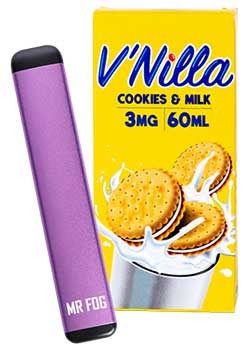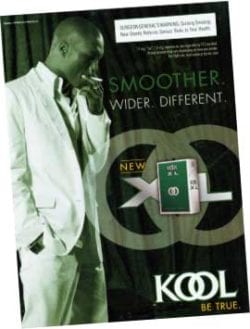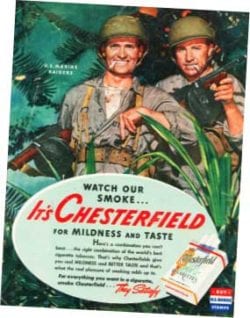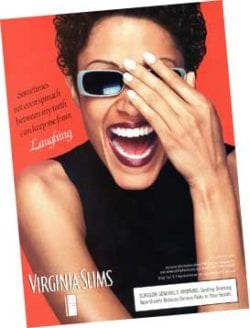RESULTS
1 “It’s a well-known fact that teenagers like sweet products.” – Brown and Williamson

9 of 10 adult smokers start before age 21. For tobacco companies, developing products and tactics that attract children is critical to their business model. Unfortunately, it is still effective with 1 out of 4 Oklahoma teens reporting vaping in the past month. Candy-colored packaging and fruit-flavored products are overwhelmingly popular with kids. In fact, teens who try flavored tobacco products are 7 times more likely to smoke than those who don’t.
- 9 of 10 adult smokers start before age 21.
- 1 out of 4 Oklahoma teens report vaping in the past month.
- Teens who try flavored tobacco products are 7 times more likely to smoke than those who don’t.
2 “We don’t smoke that $#@%. We reserve the right to smoke for the young, the poor, the black and the stupid.” – R.J. Reynolds Tobacco Company

77% of African Americans use menthol-flavored cigarettes versus just 29% of White Americans. This isn’t a coincidence. Big Tobacco specially formulated menthol to effectively mask the harshness of nicotine. They then created spin-off brands like Kool and Newport and executed highly targeted marketing in African American neighborhoods. How much targeted marketing? To this day, some African American neighborhoods see 10 times as many cigarette ads per capita as other areas.
- African American neighborhoods see 10 times the cigarette ads per capita vs. other areas.
- 77% of African American smokers use menthol-flavored cigarettes.
3 “There isn’t a market in the country that has the sales potential for Newport like the military market. The plums are here to be plucked.” – Lorillard Tobacco Company

Today, 38% of U.S. military smokers start after enlisting. How could this be? Big Tobacco provided cigarettes as part of soldiers’ rations during WW I. The practice continued through WW II, the Korean War and the Vietnam War. It was stopped during the Middle East conflicts, but the damage is still evident. Smoking is ingrained in military culture. The Department of Defense spends an estimated $1.6 billion per year on tobacco-related medical care and lost productivity. These heroes deserve better.
- 38% of U.S. military smokers start after enlisting.
- Cigarettes were included in soldier’s rations in WW I, WW II, the Korean War and Vietnam War, creating a culture of tobacco use.
4 “Younger adult smokers are strategically important to RJR’s long-term growth … Specifically, these young adult females …” – R.J. Reynolds Tobacco Company

There is no bigger prize to Big Tobacco marketers than women. While co-opting the women’s rights movements in the 1960s, they were pushing cigarettes as appetite suppressants using the tagline, “Reach for a Lucky instead of a Sweet.” They even designed a cigarette specifically for women: Virginia Slims. The resulting health toll? A more than 400% increase in lung cancer deaths among women between 1960 and 1990.
The tobacco industry targeted women by attributing smoking with individuality and independence. This template is still being used by tobacco companies to hook young women.
- Between 1960 and 1990, lung cancer deaths among women rose by 400%.
The Fight Continues
The people behind Big Tobacco’s marketing will stop at nothing to grow their profits. Their targeting of women, kids, military heroes and marginalized communities is just another day at the office. The race to hook a new generation? It’s on. Be warned: Big Tobacco marketers are working on new strategies, targeting opportunities and messaging. Their next target could be you.
Big Tobacco Puts Profits Over People. Had Enough?
Your voice is powerful in the fight against Big Tobacco. See ways you can make a difference in your community.












